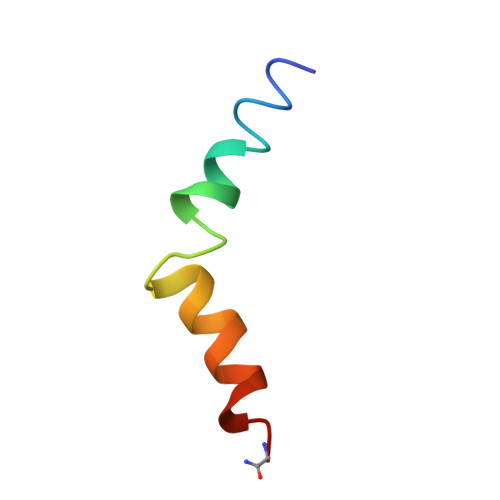Conformational changes of the HsDHODH N-terminal Microdomain via DEER Spectroscopy.
Vicente, E.F., Sahu, I.D., Costa-Filho, A.J., Cilli, E.M., Lorigan, G.A.(2015) J Phys Chem B 119: 8693-8697
- PubMed: 26086954
- DOI: https://doi.org/10.1021/acs.jpcb.5b01706
- Primary Citation of Related Structures:
5TCE - PubMed Abstract:
The human enzyme dihydroorotate dehydrogenase (HsDHODH) has been studied for being a target for development of new antineoplasic and antiproliferative drugs. The synthetic peptide N-t(DH) represents the N-terminal microdomain of this enzyme, responsible for anchoring it to the inner mitochondrial membrane. Also, it is known to harbor quinones that are essential for enzyme catalysis. Here we report structural features of the peptide/membrane interactions obtained by using CD and DEER spectroscopic techniques, both in micelles and in lipid vesicles. The data revealed different peptide conformational states in micelles and liposomes, which could suggest that this microdomain acts in specific regions or areas of the mitochondria, which can be related with the control of the quinone access to the HsDHODH active site. This is the first study to report on conformational changes of the HsDHODH N-terminal microdomain through a combination of CD and DEER spectroscopic techniques.
Organizational Affiliation:
†UNESP - Univ Estadual Paulista, Campus de Tupã, 17602-496, Tupã, SP Brazil.
















